New TV series The First Georgians: what it’s all about
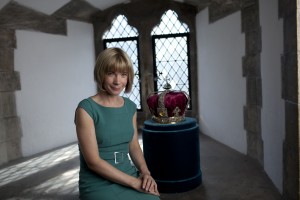 My article from the paper today tells you roughly what it’s all about…
My article from the paper today tells you roughly what it’s all about…
‘Our most calamitous Kings, the troubled lives of our Hanoverian monarchs are revealed in a fascinating new series.
– a new series will explore the lives of the British Hanoverian monarchs
– it marks the 300 years since George I ascended the throne
– the series starts Thursday, 9pm on BBC Four
Are you under the impression that Henry VIII was the most dysfunctional monarch we’ve ever had?
Meeting our Hanoverian kings of the 18th century might make you think again.
We’ll be hearing a lot about them in 2014, as our first Hanoverian monarch George I – distant forebear of today’s li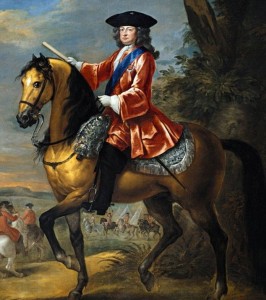 ttle Prince George – ascended the throne exactly 300 years ago.
ttle Prince George – ascended the throne exactly 300 years ago.
Exhibitions across London are celebrating this anniversary, including The First Georgians: Art & Monarchy 1714-1760 at The Queen’s Gallery, Buckingham Palace, with over 300 Georgian treasures from the Royal Collection.
At Historic Royal Palaces, where I am a curator, we’re covering the stories of George I at Hampton Court and George II at Kensington Palace. I’ll also be introducing George I and George II, Britain’s least-known kings, in a new BBC 4 series The First Georgians.
It’s funny to think that our modern British monarchy originated in Germany, and that Georg Ludwig, Elector of Hanover (effectively a prince), was invited to become King George I of Great Britain through an accident of biology.
In 1714 his distant cousin Queen Anne died with no surviving children, despite having gone through 18 pregnancies trying to produce an heir. Her nearest relatives were all Catholic, and therefore unacceptable to Britain’s powerful Protestant ruling class.
So Parliament looked for Anne’s nearest surviving Protestant relatives and finally found them living in the sleepy little German state of Hanover.
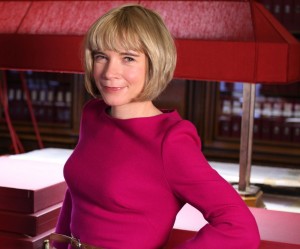 German Georg was then 54 years old, and wasn’t all that keen on coming over to Britain to start a new career as king. He wasn’t warmly welcomed by his new subjects either.
German Georg was then 54 years old, and wasn’t all that keen on coming over to Britain to start a new career as king. He wasn’t warmly welcomed by his new subjects either.
One spectator at his Coronation waved a turnip on a stick: the message was that Hanover was a place full of yokels. His new subjects also believed he had brought with him no fewer than two mistresses – one fat, one thin – known as The Elephant and The Maypole.
‘The king rejects no woman if she is very willing, very fat, and has great breasts,’ one courtier claimed.
In reality, the king’s poor English was at the root of the misunderstanding. The Elephant was really his half-sister and he lived with his single, skinny, almost respectable mistress of more than 20 years Melusine, with whom he had three illegitimate daughters.
But there was a fiery sexual scandal in King George’s past. In the 1690s, his wife, Sophia Dorothea of Celle, had embarked upon an affair with a Swedish count while George consorted with Melusine.
Their love letters were leaked and George was humiliated throughout Europe. Rumour has it he had the lover assassinated, and it’s absolutely certain he divorced his wife for adultery, placing her under house arrest in a remote German castle for the rest of her life.
At the time George I locked up his wife, their son, the future George II, was only 11. He would never see his mother again. This was one factor in the appallingly bad relationship that developed between these two. George I was quiet and shy, whereas George II was volatile and passionate.
 George I had hated his wife, while George II loved his own deeply. The parties George I held at Kensington Palace were rivalled by the exciting soirées hosted elsewhere by his son. At the Prince of Wales’s parties, people were said to have had so much fun ‘some virgins conceived’.
George I had hated his wife, while George II loved his own deeply. The parties George I held at Kensington Palace were rivalled by the exciting soirées hosted elsewhere by his son. At the Prince of Wales’s parties, people were said to have had so much fun ‘some virgins conceived’.
This bad feeling came to a head in the ludicrous events of 1717, known as ‘The Christening Quarrel’. When the Prince of Wales and his wife Caroline had their fifth child, the baby’s christening was interrupted by a gate-crasher, the Duke of Newcastle, who’d been sent by the king to be a spy in his son’s camp.
‘You rascal!’ the Prince of Wales said to the Duke, ‘I will find you later!’ Unfortunately, because all the Hanoverians spoke English with a thick German accent, what the courtier heard was, ‘You rascal! I will fight you!’
He took this as an invitation to a duel – a dreadful breach of court etiquette – and complained to the king, who, believing the worst, expelled his son and Princess Caroline from the royal palaces.
He also kept behind four of his grandchildren as hostages for future good behaviour from their father the Prince of Wales.
Poor Princess Caroline ‘fell into one faint after another’ as she said goodbye to her weeping children. Worse still, the new baby boy, whose christening had ignited the quarrel, was given poor medical care, and died.
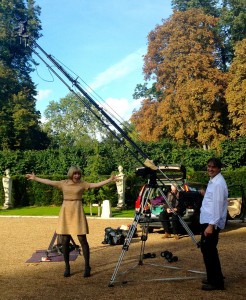 Accounts in the National Archives record payment for a little square of black velvet, the size of a child’s coffin.
Accounts in the National Archives record payment for a little square of black velvet, the size of a child’s coffin.
This quarrel dangerously tarnished the image of the new Royal Family. And yet the alternative was seen as even worse. Few people wanted the Catholic Stuart claimants to the throne back again: the Old Pretender James Stuart, and then his son, the Young Pretender Bonnie Prince Charlie.
Slowly but surely, with growing confidence, kings George I and then George II settled into their new realm, providing steady government, and crushing two rebellions by their exiled rivals.
George I’s great-grandson, George III, completed the process of transplantation when he came to the throne in 1760. ‘I was born and educated in this country,’ he proudly declared, ‘I glory in the name of Britain.’
A kind and welcoming man, he came to the throne resolved ‘to introduce a new custom’: that all his ‘family should live well together’, because he was ‘very sorry for the misunderstandings that there had formerly been’.
He proceeded to act on this by marrying a German princess, Charlotte, remaining uxoriously devoted to her and fathering 15 children.
Yet one thing remained the same. As the years rolled by, even the friendly George III came to have a terrible relationship with his own eldest son, the future George IV.
When the king began to suffer from debilitating bouts of a mysterious illness, possibly porphyria, or maybe bipolar disorder, his son tried to carry out a coup and become king in his father’s place.
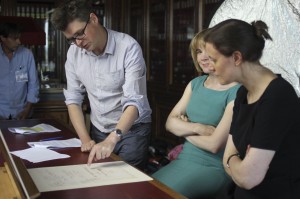 Today, many people have difficulty identifying the four Georgian monarchs, thinking them grumpy, German and indistinguishable.
Today, many people have difficulty identifying the four Georgian monarchs, thinking them grumpy, German and indistinguishable.
But in reality they were human beings, experiencing pain and passion just as the rest of us do. This year’s exhibitions and programmes about the Hanoverian kings will hopefully bring them back to vivid life.’
The First Georgians, Thursday, 9pm, BBC4. The First Georgians: Art & Monarchy 1714-1760 is showing at The Queen’s Gallery until 12 October.






One day, we will look back on all this and laugh. Why did we ever give such power to such lunatics? For absolutely no logical reason whatsoever. “Oh look, you are *his* offspring, so come and rule over us and we will do whatever you ask..
Unbelievable
Any chance of airing this series in America?
BBC America seems stuck on Top Gear reruns and I’d love to see this series.
What a lovely documentary, thank you very much.
If t is not a secret :-), in which paper your article is? Would be happy to read it !
Blanka
The programme was thoroughly enjoyable with some revealing insights into the attitude to the new regeme from the mob
Jerry W At the time of the invite there was still a pathological fear of Catholicism in England so finding a Protestant claiment no matter how obscure was paramount The civil war was within living memory and no one wanted a repeat of that Just as today the vast majority of the population just wanted to get on with their lives and be left in peace which a return to bloodshed would not allow. Even 70 odd years later there would be anti-Catholic riots in London
Really enjoyed the first episode and can’t wait for the next one this Thursday. For me as a “Kraut” it’s interesting and a relief to see a different period and angle of German influence on British history depicted than just WW1 and WW2 – especially with the 100th anniversary of WW1! Your trademark highlighting of the human factor behind the royal functions and roles breathes some new life into these rather neglected personas 🙂 Btw… your staff at HCP did a fabulous job last weekend to give us overnight visitors a great experience. Vielen Dank!
Is there any chance of a second series the ‘second Georgians’ ? I found the first series, informative and extremely interesting.